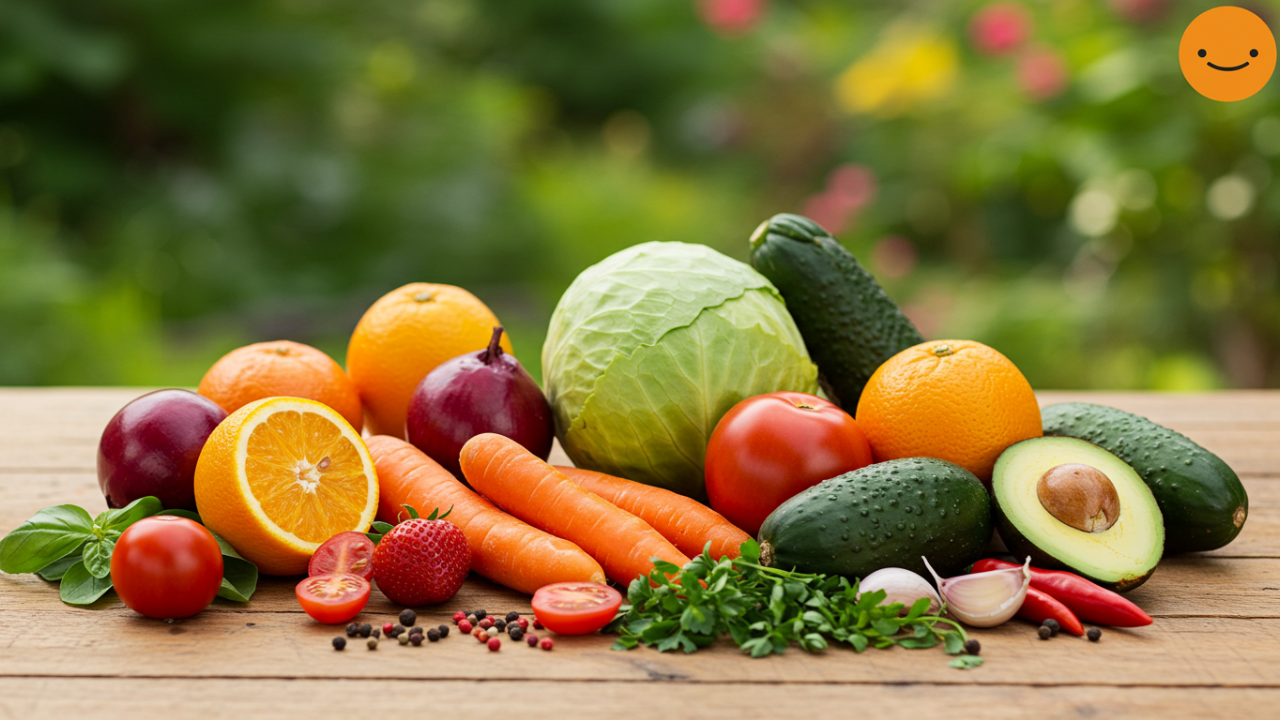In a world where supermarkets stock strawberries in December and asparagus in the dead of winter, it’s easy to forget the magic of eating with the seasons. But there’s something profoundly satisfying about biting into a ripe tomato fresh from the vine in summer or savoring a hearty squash stew when the leaves turn golden in fall. Celebrating seasonal ingredients isn’t just a trend—it’s a way to reconnect with nature’s rhythm, support local farmers, and elevate your cooking to new heights. This article dives deep into why seasonal eating matters, how to spot what’s in season, and shares mouthwatering recipes that highlight these gems. Whether you’re a novice cook or a kitchen pro, you’ll find practical tips and inspiration to make your meals more flavorful and sustainable.
Why Embrace Seasonal Ingredients?
Eating seasonally means choosing produce at its peak ripeness, when it’s harvested locally and hasn’t traveled thousands of miles. This approach offers a trifecta of benefits: superior taste, better nutrition, and environmental perks.
First, flavor reigns supreme. Seasonal fruits and vegetables are allowed to ripen naturally on the plant, absorbing sunlight and nutrients from the soil. Think of a summer peach—juicy, sweet, and aromatic—versus its off-season counterpart, which might be picked green and ripened artificially, resulting in a mealy texture and bland taste. By aligning your meals with the calendar, you’re treating your palate to ingredients at their best.
Nutritionally, seasonal produce packs a punch. Studies show that fruits and veggies harvested at peak ripeness retain higher levels of vitamins, minerals, and antioxidants. For instance, spring greens like spinach and kale are bursting with vitamin C and iron right after winter, helping to boost immunity when we need it most. This isn’t just anecdotal; research from institutions like the USDA highlights how transportation and storage can degrade nutrient content in out-of-season items.
Then there’s the eco-angle. Seasonal eating reduces the carbon footprint associated with global shipping. Local produce requires less fuel for transport, and supporting regional farms bolsters community economies while preserving farmland. It’s also often more affordable—supply abundance drives down prices. During tomato season, you might snag a pound for pennies compared to winter imports. Plus, it encourages biodiversity; sticking to monocrops year-round depletes soil, but seasonal variety promotes crop rotation and healthier ecosystems.
Incorporating seasonal ingredients can transform your diet without overhauling your habits. Start small: swap canned corn for fresh ears in summer salads or opt for root vegetables in winter soups. The key is mindfulness—checking labels, visiting farmers’ markets, or even growing a windowsill herb garden.

Identifying Seasonal Ingredients by Region and Time of Year
Knowing what’s in season depends on your location, but general patterns hold across temperate climates like much of North America and Europe. Seasons vary by hemisphere (summer in the Northern means winter in the Southern), and microclimates play a role—coastal areas might have extended growing periods. Use apps like Seasonal Food Guide or local agricultural extensions for precise info, but here’s a broad overview to get you started.
Spring: Renewal and Fresh Greens
Spring bursts with tender, vibrant produce after winter’s dormancy. Expect asparagus, peas, radishes, strawberries, and leafy greens like arugula and lettuce. In cooler regions, rhubarb and fiddlehead ferns add unique twists. These ingredients signal lighter, brighter meals—perfect for shedding winter heaviness.
Summer: Abundance of Colors and Juices
Summer is a feast for the senses with tomatoes, zucchini, berries, corn, peppers, and stone fruits like cherries and apricots. Herbs like basil and mint thrive, too. This season’s bounty suits grilling, salads, and no-cook dishes, capturing the essence of sun-drenched days.
Fall: Hearty and Earthy Harvests
As temperatures drop, root vegetables and squashes take center stage: pumpkins, sweet potatoes, apples, pears, Brussels sprouts, and mushrooms. These provide comfort and warmth, ideal for roasting and baking. Fall also brings nuts and grains, adding texture to dishes.
Winter: Robust Roots and Citrus
Winter focuses on storage crops like potatoes, carrots, beets, and cabbages, alongside citrus fruits such as oranges and grapefruits from warmer areas. Hardy greens like kale and collards withstand frost, offering resilience in meals. This season emphasizes slow-cooked, nourishing foods.
To identify seasonality practically, shop at farmers’ markets where vendors often label harvest dates. Look for produce that’s firm, vibrant, and free of blemishes—signs of freshness. Avoid items that feel overly waxy or uniform, which might indicate imports. Experiment by subscribing to a CSA (Community Supported Agriculture) box; it delivers what’s ripe each week, forcing creative cooking.
Mouthwatering Recipes to Highlight Seasonal Stars
Now, let’s put theory into practice with four original recipes, each spotlighting a seasonal ingredient. These are designed for home cooks, using simple techniques and accessible pantry staples. Each serves 4 and includes prep tips for maximum flavor.
Spring Asparagus and Pea Risotto
Asparagus and peas embody spring’s freshness in this creamy risotto. It’s vegetarian-friendly and ready in 45 minutes.
Ingredients:
- 1 lb fresh asparagus, trimmed and cut into 1-inch pieces
- 1 cup fresh or frozen peas
- 1 ½ cups Arborio rice
- 1 onion, finely chopped
- 4 cups vegetable broth, warmed
- ½ cup white wine (optional)
- ½ cup grated Parmesan cheese
- 2 tbsp butter
- Salt, pepper, and lemon zest to taste
Instructions:
- In a large pot, melt 1 tbsp butter over medium heat. Sauté onion until translucent, about 5 minutes.
- Add rice, stirring to coat for 2 minutes. Pour in wine if using, and cook until absorbed.
- Gradually add broth, ½ cup at a time, stirring until absorbed before adding more. This takes about 20 minutes for al dente rice.
- In the last 5 minutes, stir in asparagus and peas. They should remain crisp-tender.
- Off heat, mix in remaining butter, Parmesan, lemon zest, salt, and pepper. Serve immediately for creamy texture.
Tip: Blanch asparagus briefly if it’s thick to ensure even cooking. This dish pairs well with a side salad for a light meal.
Summer Tomato and Basil Caprese Salad with a Twist
Summer tomatoes shine in this elevated caprese, adding grilled halloumi for protein. Prep time: 15 minutes.
Ingredients:
- 4 large heirloom tomatoes, sliced
- 8 oz fresh mozzarella, sliced
- 8 oz halloumi cheese, sliced and grilled
- 1 bunch fresh basil leaves
- 2 tbsp balsamic glaze
- 2 tbsp extra-virgin olive oil
- Sea salt and cracked black pepper
Instructions:
- Grill halloumi slices on a hot pan until golden, about 2 minutes per side.
- Arrange tomato and mozzarella slices alternately on a platter.
- Tuck basil leaves between layers and top with grilled halloumi.
- Drizzle with olive oil and balsamic glaze. Season with salt and pepper.
- Let sit 5 minutes for flavors to meld before serving.
Variation: Add sliced peaches for extra sweetness. This no-cook recipe is ideal for hot days.
Fall Butternut Squash and Apple Soup
Fall’s squash and apples create a velvety soup with warming spices. It’s vegan and freezes well; ready in 50 minutes.
Ingredients:
- 1 medium butternut squash, peeled and cubed
- 2 apples, cored and chopped (use tart varieties like Granny Smith)
- 1 onion, chopped
- 4 cups vegetable broth
- 1 tsp ground cinnamon
- ½ tsp nutmeg
- 2 tbsp olive oil
- Salt and pepper
- Optional: Coconut milk for creaminess
Instructions:
- Heat oil in a pot over medium. Sauté onion until soft, 5 minutes.
- Add squash, apples, spices, salt, and pepper. Cook 5 minutes.
- Pour in broth, bring to boil, then simmer 25-30 minutes until squash is tender.
- Blend until smooth using an immersion blender. Stir in coconut milk if desired.
- Garnish with toasted pumpkin seeds for crunch.
Pro tip: Roast the squash first for deeper flavor—spread on a sheet pan at 400°F for 20 minutes.
Winter Citrus and Kale Salad with Roasted Beets
Winter’s citrus brightens this nutrient-dense salad, balanced by earthy beets. Prep: 40 minutes.
Ingredients:
- 4 cups kale, massaged and chopped
- 2 beets, roasted and sliced
- 2 oranges, segmented
- 1 grapefruit, segmented
- ½ cup walnuts, toasted
- ¼ cup feta cheese (optional)
- 3 tbsp olive oil
- 2 tbsp apple cider vinegar
- 1 tsp honey
- Salt and pepper
Instructions:
- Preheat oven to 400°F. Wrap beets in foil and roast 30-40 minutes until tender. Peel and slice once cooled.
- Whisk oil, vinegar, honey, salt, and pepper for dressing.
- Massage kale with a bit of dressing to soften.
- Toss kale with beets, citrus segments, walnuts, and feta.
- Drizzle remaining dressing and serve.
Hack: Segment citrus over a bowl to catch juices for the dressing, adding natural acidity.
These recipes showcase how seasonal ingredients can star without complexity, encouraging experimentation.
Tips for Cooking and Storing Seasonal Produce
To maximize your seasonal hauls, proper handling is key. Store leafy greens in the fridge’s crisper with a damp cloth to maintain humidity— they’ll last up to a week. Root veggies like carrots prefer cool, dark spots away from ethylene-producing fruits (e.g., apples) to prevent sprouting.
Preparation wise, minimalism often works best: roast fall squashes with olive oil and herbs to enhance natural sweetness, or blend summer berries into smoothies without added sugar. Pair flavors thoughtfully—acidic citrus cuts rich winter dishes, while herbs like dill elevate spring veggies.
For sustainability, plan meals around what’s available to reduce waste. Freeze excess berries or make stocks from veggie scraps. And remember, imperfections in seasonal produce (like oddly shaped tomatoes) are normal and don’t affect taste.
FAQ
What if seasonal ingredients aren’t available in my area?
Urban dwellers can turn to frozen or preserved options, which capture peak flavor. Community gardens or online local produce deliveries are great alternatives. In a pinch, adapt recipes with similar profiles—swap asparagus for broccoli in spring dishes.
How do seasonal ingredients impact health?
They provide diverse nutrients throughout the year, supporting a balanced diet. For example, winter citrus boosts vitamin C for immune health, while summer berries offer antioxidants for skin protection.
Can I grow my own seasonal produce?
Absolutely! Start with easy herbs or container tomatoes. Research your hardiness zone for best plants—spring starters like peas thrive in cool soil.
Are seasonal recipes more expensive?
Often cheaper due to abundance, but initial farmers’ market visits might seem pricier. Over time, reduced waste and better quality make it cost-effective.
How do I transition to seasonal eating?
Begin by tracking one season’s stars weekly. Meal prep around them, and gradually phase out off-season staples for a seamless shift.



